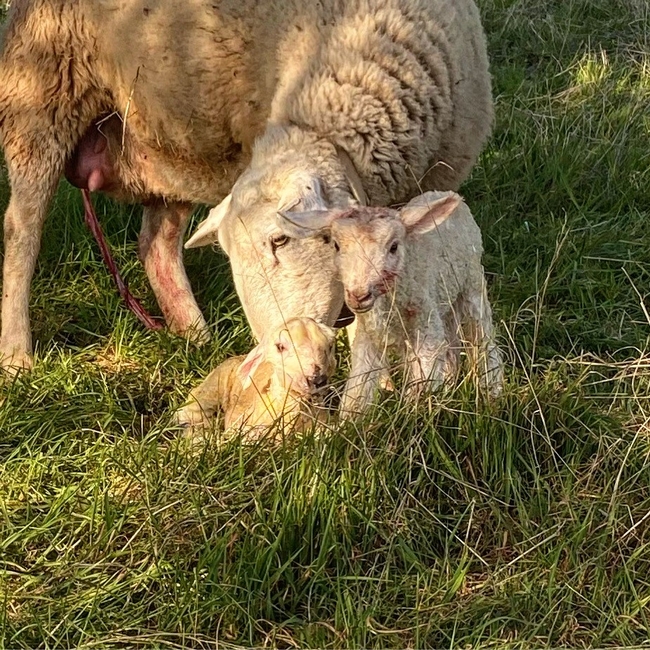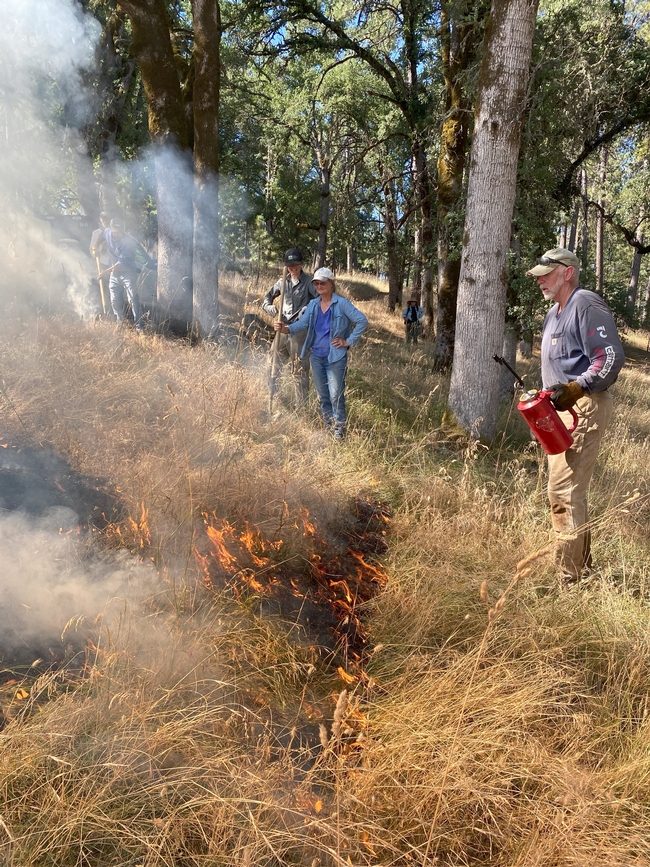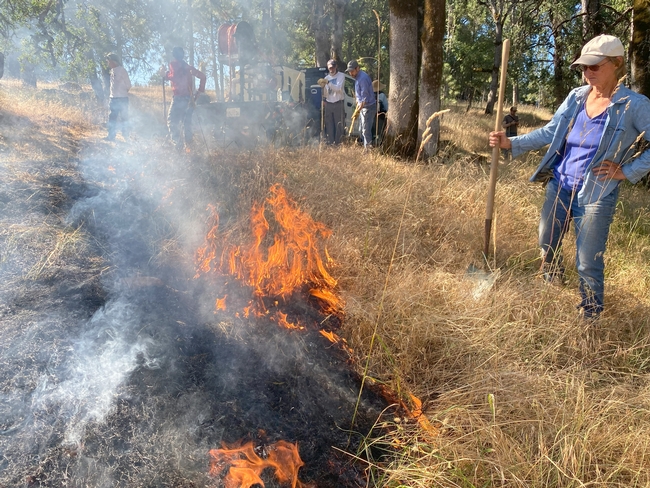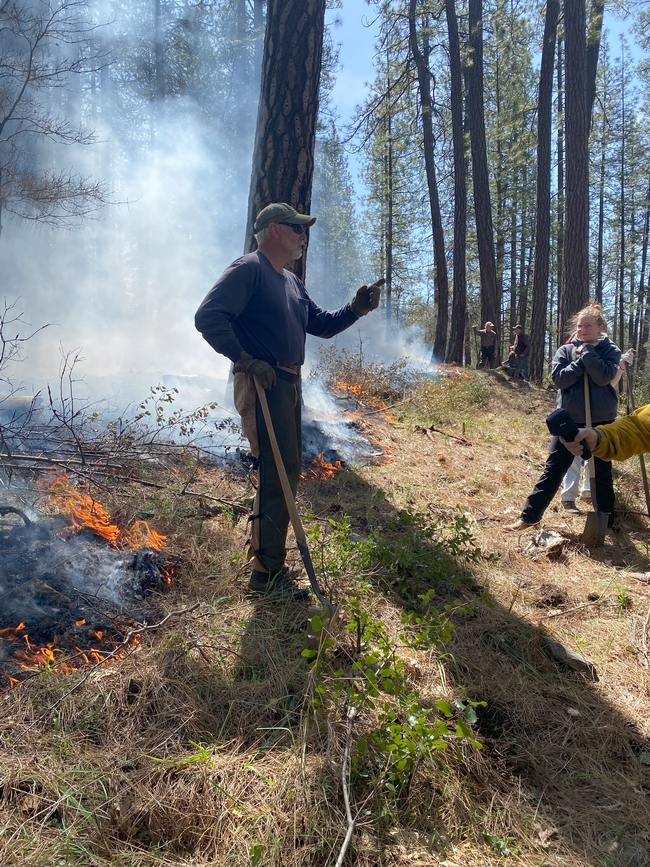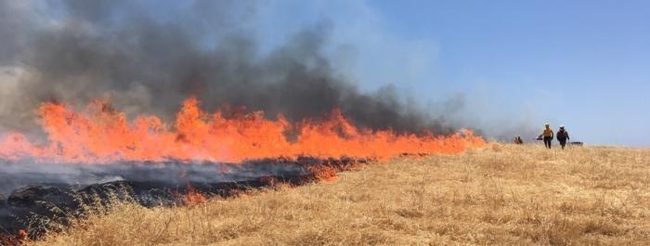- Author: Daniel K Macon
Later this month, the USDA's National Animal Health Monitoring System (NAHMS) will kick off its fourth national study of the U.S. sheep industry. This project is entirely voluntary on the part of producers, and will provide the industry with critical information about high priority animal health and management issues. I hope you'll consider participating!
According to NAHMS, the study has five primary objectives:
- Describe the occurrence of common, economically important sheep diseases, as well as management and biosecurity practices associated with those diseases;
- Describe antimicrobial (antibiotic) stewardship on sheep operations and estimate the prevalence of enteric microbes and antimicrobial resistance patterns;
- Describe producer practices regarding internal parasite control and dewormer resistance;
- Describe changes in animal health, nutrition, and management practices in the U.S. sheep industry since 1996; and
- Provide serum to include in the serologic bank for future research.
In Phase I (January-February 2024) of the study, the National Agricultural Statistics Service will contact selected producers to complete a general sheep management questionnaire. These producers will also have an opportunity to participate in additional research activities.
During Phase II (April-July 2024), a subset of these producers will be contacted by USDA's Veterinary Services to complete a more detailed questionnaire and provide biological samples, including
- Fecal Parasite Test: Fecal egg counts on a composit sample will provide information about parasite burden. Select operations will also be examined for dewormer effectiveness.
- Enteric Microbe Test: Detection and antimicrobial susceptibility testing of Salmonella, E. coli, and Campylobacter in your sheep.
- Lameness Pathogens Test: Swabs will be tested for lameness pathogens on the operation.
If your operation is selected for these tests, you'll receive individualized reports for each category (these tests would cost more than $3,000 if you had to have your own veterinarian conduct them). The results will also be used to help build our understanding about key sheep health issues. From an extension perspective, these results will help me focus future workshops and materials around the issues that matter most to commercial producers! And again, your privacy will be protected - participation is entirely voluntary, and no data will be reported in any way that could reveal the identity of a participant.
I hope you'll participate! For more information, check out the NAHMS sheep study webpage!
- Author: Daniel K Macon
There's still time to register for our first-ever Sierra Foothills Rancher's Fire Academy! We'll be covering topics like using prescribed fire to control rangeland weeds, planning your own prescribed fire, fire tool basics, ranching hardening, and managing livestock during wildfire. You'll learn from local and regional fire experts, UC researchers, and from your fellow ranchers! Each session is just $10 per ranch (with up to four people from each ranch eligible to participate)!
- Author: Daniel K Macon
Some of you probably know what my family has experienced over the last 10 months. I won't rehash it all here - if you're interested, I invite you to check out my personal blog at www.flyingmule.blogspot.com. Needless to say, 2023 has been quite a year.
The purpose of this blog post is to share some thoughts and observations about the vulnerability of first-generation ranchers to medical and other crises. And hopefully, to help us all have reality-based conversations about the connection between our own physical well-being and our ability to farm or ranch. I hope others will weigh in on this conversation.
To make the long, painful story short, 2023 has been an awful year for my family. In late January, Samia, my wife of 33 years, underwent emergency brain surgery. In February, just prior to a second brain surgery, she was diagnosed with glioblastoma, an aggressive form of brain cancer. She passed away in mid August.
I'm blessed to have really good health insurance through my job. When I checked my health insurance portal this evening, I found that they had been billed nearly $1.7 million since January 1. While they had negotiated a discount of just over $1 million, they'd paid out in excess of $600,000 (so far - I just received another ambulance bill today). We can (and should) debate the merits of the U.S. healthcare system in another space; in this post, I want to talk about health insurance as it pertains to small-scale farming and ranching.
Samia and I started Flying Mule Farm shortly after we moved to Auburn in 2001. Our first commercial farming endeavors were selling pumpkins in the fall and potted daffodils in the spring at the Auburn Farmers' Market. I soon realized that I was better at raising livestock than plants, and we started raising sheep in 2005. I worked full time and ranched part time until 2011, when I jumped into sheep production with both feet - quitting my other jobs!
I was 44 years old - middle-aged, but still invincible (in my mind) - even though I'd broken both arms in a fall from a stack of straw in 2007. And as an invincible middle-aged rancher, I debated whether health insurance was a necessary expense. Fortunately, Samia insisted that it was - especially since our growing daughters needed to see a doctor each year. But I still grumbled about the premium payments.
In 2009, I started helping our local extension office teach a multi-week farm/ranch business planning course. We always forced new producers to think about difficult things like paying themselves, like generating profit, like taking a vacation now and then. And we talked about health insurance. Farming and ranching, after all, are very physical occupations - especially at the scale typical here in the Sierra foothills. I always offered the example of my broken arms - we all laughed and moved on to more important things.
But as my family has lived through the last 10 months, I have realized that if this had happened when I was self-employed, it would have broken us - physically, emotionally, and financially. I've realized the importance of insurance. When I was self-employed, our out-of-pocket maximum was beyond our means (to be fair, a higher premium was also beyond our means). Yesterday, I met with a young beginning rancher and asked about their insurance. “I don't have any,” was the reply.
These decisions are very personal for all of us - I get that! But with the benefit of hindsight, I also realize now that I would have done everything possible to dig up the means to pay for Samia's treatment regardless of our insurance status. And that without insurance, I undoubtedly would have fallen short. The decisions that our family had to make in the last 10 months were difficult enough; deciding which bill to pay (or not to pay) - and losing a business (and our home) in the process - would have been even more devastating.
- Author: Daniel K Macon
Barb goatgrass (Aegilops triuncialis L.) is a winter annual grass native to the Mediterranean region and western Asia. According to a UCANR publication, it was introduced to Sacramento and El Dorado Counties via the importation of cattle from Mexico. And it is a growing problem on annual rangelands here in the Sierra Foothills. In some ways, I think of this invasive grass as "medusahead on steroids" - barb goatgrass spikes and joints (seedheads) disperse by attaching to animals, humans, and equipment. I often see new infestations along roads or walkways. Barb goatgrass forms dense stands with a rapidly establishing root system, making it extremely competitive with other annual grasses and forbs. In some areas, barb goatgrass reduces forage quality and quantity by as much as 75 percent - and because livestock tend to avoid the plant (and graze more desirable forages), it can spread rapidly.
Carol and Andy Kramer, who operate a sheep and cattle ranch in Nevada County, have been fighting barb goatgrass for several years. Most recently, they've been working with the Natural Resource Conservation Service (NRCS) through an Environmental Quality Incentives Program contract focused on goatgrass control. Over the course of the last 9 months, Carol and Andy have been working with the Placer Resource Conservation District (RCD) and UCCE to experiment with using prescribed fire to reduce goatgrass and re-invigorate native grasses.
Research suggests that burning goatgrass for two consecutive years offers "excellent control." Sounds pretty straightforward, right?! Not so fast! Fire is an effective control method when most of the fine fuel has dried sufficiently to carry the fire, but when the goatgrass seedheads are still attached to the stem - in other words, in late spring or early summer, when everyone is starting to get nervous about fire in the foothills!
A quick aside about using prescribed fire as a range improvement tool. When I started working with ranchers in California in the early 1990s (when I was just out of college, working for the California Cattlemen's Association), prescribed fire had largely gone out of vogue. This was partly a result of increasing worries about liability, and partly, as I recall, a shift in focus and attitude within the California Department of Forestry and Fire Protection (which became officially known as CalFire in the early 2000s). Today, after a decade of increasingly catastrophic wildfires (and the accelerating spread of invasive weeds like barb goatgrass), prescribed fire is making a comeback - thanks to efforts of many of my UCCE colleagues, RCD staffers and contractors like Cordi Craig and Chris Paulus (who led this effort), and especially of landowners like Carol and Andy!
Obviously, with something as complicated as prescribed burning, you don't simply wake up one June morning and say, "Hey, this would be a great day to light the back pasture on fire!" Carol and Andy (along withCordi and Chris, andUCCE) began planning for this burn last winter. As fire professionals,Cordi and Chris recommended putting a "black line" around the 1.5 acres ofgoatgrass during the winter months, whenCALFIRE burn permits are not required. Carol and Andy invested in water tanks and other equipment, and spent much of the winter and early spring pile burning and creating fire lines. Working together, we also burned several adjacent units to remove ground and ladder fuels in the areas surrounding thegoatgrass site.
Then we all waited! We needed the underlying fuel to be dry enough to burn, but we also needed the goatgrass to hold onto its seedheads. And we needed the right weather conditions. With the wet, cool spring we had in 2023, these conditions didn't arrive until July - well into fire season. This meant that we also needed a permit from CalFire. I've lived and worked in CalFire's NEU unit (which covers Placer, Nevada, and Yuba Counties) - and worked with and around ranchers - for nearly 30 years. I wasn't aware of CalFire ever allowing a rancher to do a prescribed fire for range improvement (or any other reason) in July. But thanks to the Kramer's persistence and Cordi and Chris's experience and knowledge, we received permission to do the burn on July 13.
Carol and Andy started the fire around 9am that morning - temperatures were hovering around 80F, and the relative humidity was just over 50%. Amazingly, we had difficulty getting the vegetation to burn - even as temperatures rose and humidity dropped over the course of the morning. By midday, we'd burned all we could burn, and began mopping up (making sure the fire was completely out).
Walking through the burn, I was amazed by the variability in burn intensity. Some of the goatgrass seedheads were completely consumed; others looked like they had not been exposed to fire at all. Carol collected seedheads from before the burn, as well as singed and apparently unsinged seedheads, to see if there will be any difference in germination (we'll keep you posted). We also started thinking about next year's burn.
One of the biggest challenges in burning for a second consecutive year, I expect, will be whether there is enough fine fuel (other grasses, pine needles, dry leaves, etc.) to carry the fire through the goatgrass. Visiting the site two weeks ago, I was impressed to see native blue wildrye starting to grow in the blackened burn unit (even with very little precipitation since the fire) - we'll be anxious to see what happens once we've had a germinating rain. Even so, we are considering broadcasting a quick-growing, early maturing annual grass (like soft chess (Bromus hordeaceus) this fall so that we have more receptive fuel next spring.
I think we all learned a great deal about the logistics of using fire to manage goatgrass (thanks to Cordi and Chris) - and about the challenges of using prescribed fire during fire season. One of the side benefits, from my perspective, is the demystification of fire generally. This was not a scary burn, even though it happened in the middle of July! While this was partly due to the conditions on the day of the burn, the work that Carol and Andy did to prepare (with Cordi and Chris's guidance) over the many months leading up to July 13 made it successful and safe. We're all looking forward to next year's fire!
- Author: Dan Macon
Ranchers in Placer, Nevada, and Yuba Counties, along with UC Cooperative Extension (UCCE) and the County Agricultural Departments from these three counties, have established a Disaster Livestock Access Program to facilitate livestock and human safety before, during, and after wildfire and other emergencies.
Evacuating livestock from commercial ranching operations may not be possible in the event of a major incident, due to scale of operation. Sheltering-in-place may be the best and safest alternative. Safe access by trained and qualified ranch personnel is critical to livestock welfare, firefighter safety, and public safety. The geographic scope of this project aligns with the CALFIRE administrative unit for the region (Nevada, Placer, and Yuba Counties).
Livestock Access Passholders may be permitted into evacuation zones, or other restricted areas, to provide feed, water, medical treatment, and other care to commercial livestock.
Qualified Commercial Livestock Operator: For the purposes of this program, a commercial livestock operator is defined as owning/managing 50+ head of livestock (including in utero, e.g., 25 bred cows), 100+ poultry or rabbits, or 50+ beehives that reside in Placer, Nevada, or Yuba County for at least a portion of the year, or a person who, through an agreement with that owner of livestock, has authority and is responsible to oversee the care and well-being of the livestock. This program applies to commercially raised species of livestock, including cattle, sheep, goats, hogs, poultry, rabbits, llamas, alpacas, and bees. “Commercially raised” means the livestock are raised as part of a business.
Application for Registration: To enroll in the program, a Commercial Livestock Operator must provide contact information, APNs and/or physical addresses of grazing sites, general season(s) of use, livestock description and count, and other information by completing the online form at https://surveys.ucanr.edu/survey.cfm?surveynumber=40428. If you need assistance completing the online registration, contact Dan Macon at (530) 889-7385 or dmacon@ucanr.edu. Please note that ranch owners, family members, and managerial employees are eligible to participate. Employees who receive hourly pay are not eligible.
Renewal Application: If you've received a Nevada-Placer-Yuba Pass in 2021 or 2022, you can renew your pass by re-registering and talking a 1-hour virtual refresher course. Register here: https://surveys.ucanr.edu/survey.cfm?surveynumber=40477.
Mandatory Training: A new Commercial Livestock Operator must complete an initial 4-hour training. Trainings will be offered in late May and early June in Nevada, Placer, and Yuba Counties, and you may attend any one of these regardless of your county of residence. If you received a pass in 2022, you will need to complete a 1-hour virtual training session.
For more information: Contact Dan Macon, UCCE Livestock and Natural Resources Advisor (Placer-Nevada-Sutter-Yuba) at dmacon@ucanr.edu or (530) 889-7385.


